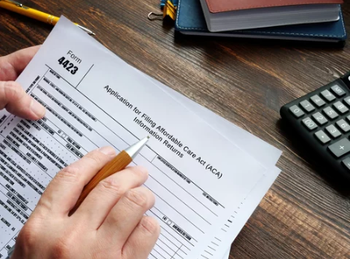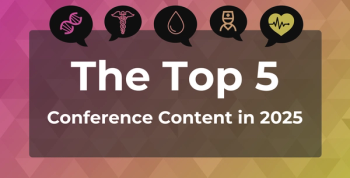
Dr Bobeck Modjtahedi Discusses Trends in Telehealth for Diabetic Retinopathy
Bobeck Modjtahedi, MD, elaborates on the importance of devising effective and convenient mechanisms for diabetic retinopathy screening.
When we construct telehealth options for diabetic retinopathy screening, it's important to make sure that we have the capacity to screen for other potentially life-threatening diseases, said Bobeck Modjtahedi, MD, a vitreoretinal surgeon at Kaiser Permanente in Southern California.
Transcript:
Do you anticipate the increase in telehealth use for diabetic retinopathy to continue after the pandemic ends?
One of the things we found is when we've surveyed our patients, over 80% of patients have felt like they preferred the telehealth workflow for them compared to traditional clinic visits. One thing I'll mention is that a lot of our screening is done in primary care offices. So when a patient is seen in the primary care office, while they're getting all their other diabetic health care maintenance, they also get a fundus photograph, and that fulfills their screening requirements. So they like that because they don't have to come in for a second visit at a different time. Then also for the monitoring programs, those patients that we find have moderate levels of diabetic retinopathy on the screening photographs, they like to come in and get their 2 photographs, and then they go home. If there's something significant, then they get a phone call and told to come back later. So again, it's really quick for them, it's like a 15 minute visit as opposed to these long, more labor intensive visits.
I think there's there's a lot of patient buy-in. I think that we've seen patients being more and more tech savvy in general, and a higher degree of interest and engagement with technology from the patients. I think all those things build towards more different kinds of telehealth options for these patients. One thing I'll mention too, is that our reading center does more than just diabetic retinopathy. We have programs for monitoring patients with glaucoma, to screen for plaquenil toxicity in those patients who take plaquenil for autoimmune diseases. We also have macular degeneration monitoring and myopia programs. We've had all these other programs outside of just diabetic retinopathy, and all of them have been very successful with high patient buy-in. That's an area where we can see I think, more and more diseases that are low-risk diseases that are primarily screened or monitored through imaging. Those diseases can also be encapsulated in these telehealth options.
Can you elaborate on the importance of screening when it comes to diabetic retinopathy?
One thing that I would emphasize when we talk about telehealth for diabetic retinopathy, that sometimes a lot of people who are not in the space or not in the ophthalmology space necessarily think about is that a lot of these patients that we do diabetic retinopathy screening photographs for have non-diabetic disease on their eyes. That's to say a lot of these patients have glaucoma, they have macular degeneration. There are a certain number of patients that we've diagnosed with tumors, choroidal melanomas, or retinal detachments. These are all very serious vision-threatening and sometimes even life-threatening conditions.
When we think about diabetic retinopathy screening, it's important for us to think beyond just looking for diabetic retinopathy. There's a lot of other morbidities that are associated that come with diabetes. Patients will sometimes have retinal artery occlusions, which are essentially strokes of the retina, and that increases their risk of having a cerebrovascular accident in the future. So if all we're focusing on is strictly diabetic retinopathy, we sometimes miss all these other very important diseases that can blind patients or even kill them, like I mentioned. When we construct telehealth options for diabetic retinopathy screening, it's important to make sure that we have the capacity to screen for those other diseases but also the infrastructure in place to absorb patients with those other conditions so that there's a good system for referral, urgent referral for urgent pathology and even routine referral for a variety of diseases. That's something that I feel [is] sometimes neglected when we think about diabetic retinopathy screening is how much non-diabetic disease and pathology that we are detecting.
Newsletter
Stay ahead of policy, cost, and value—subscribe to AJMC for expert insights at the intersection of clinical care and health economics.









































